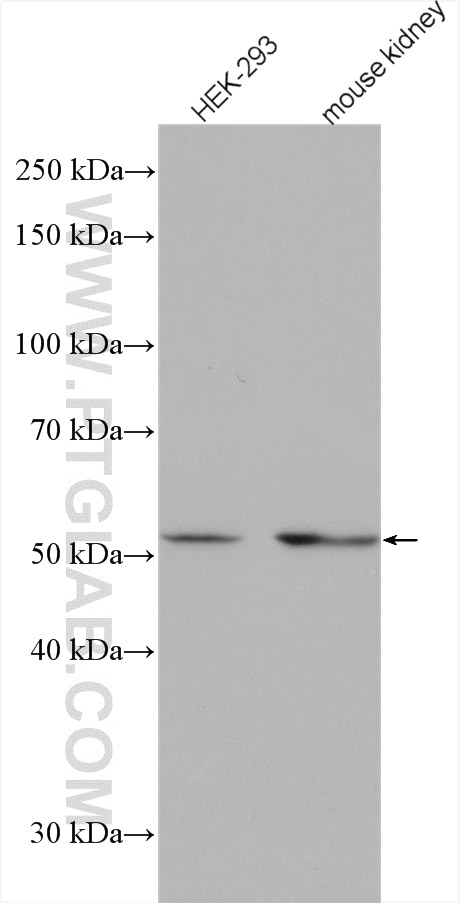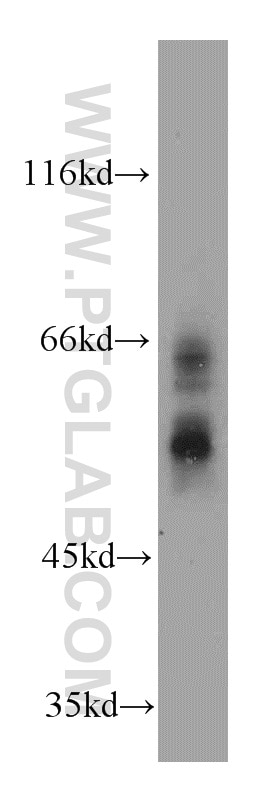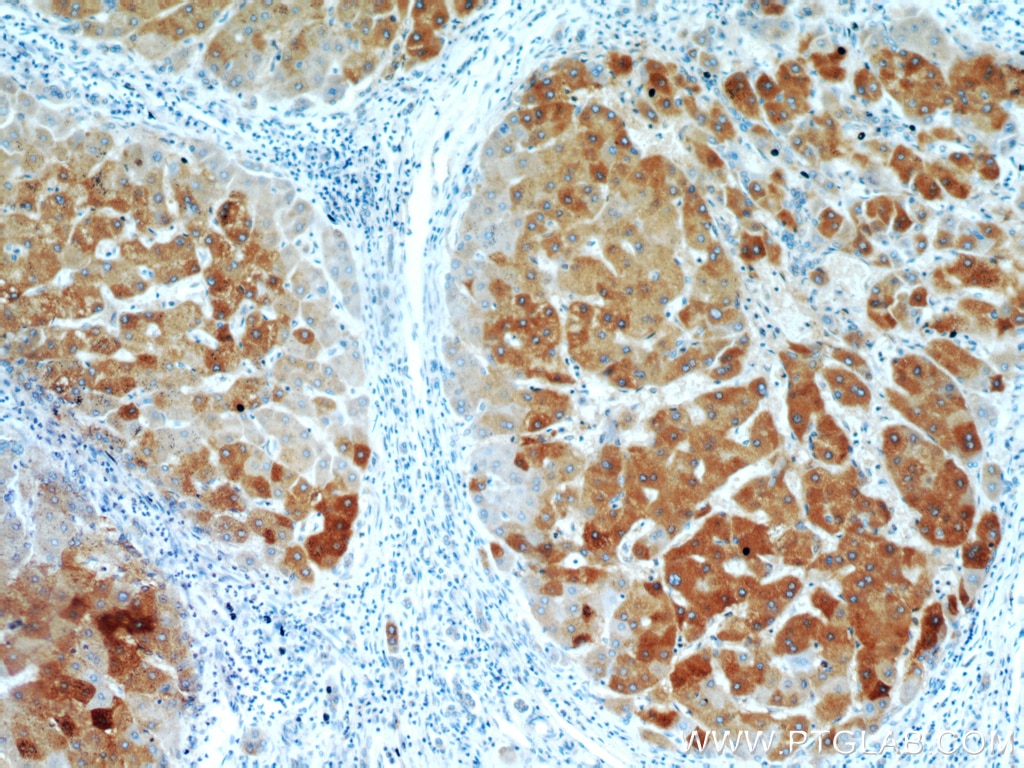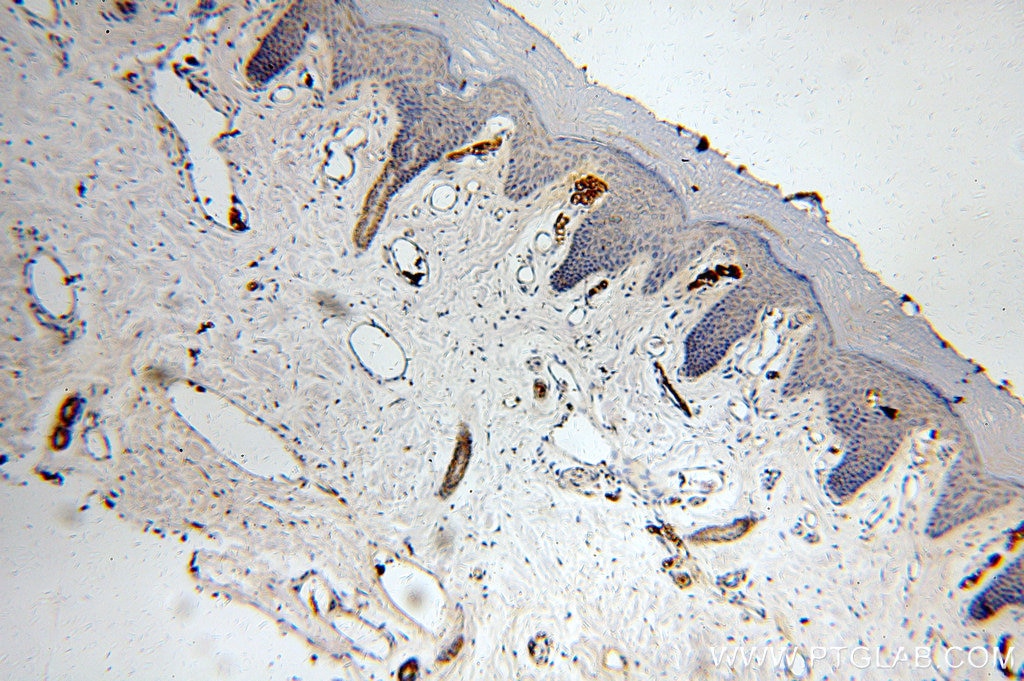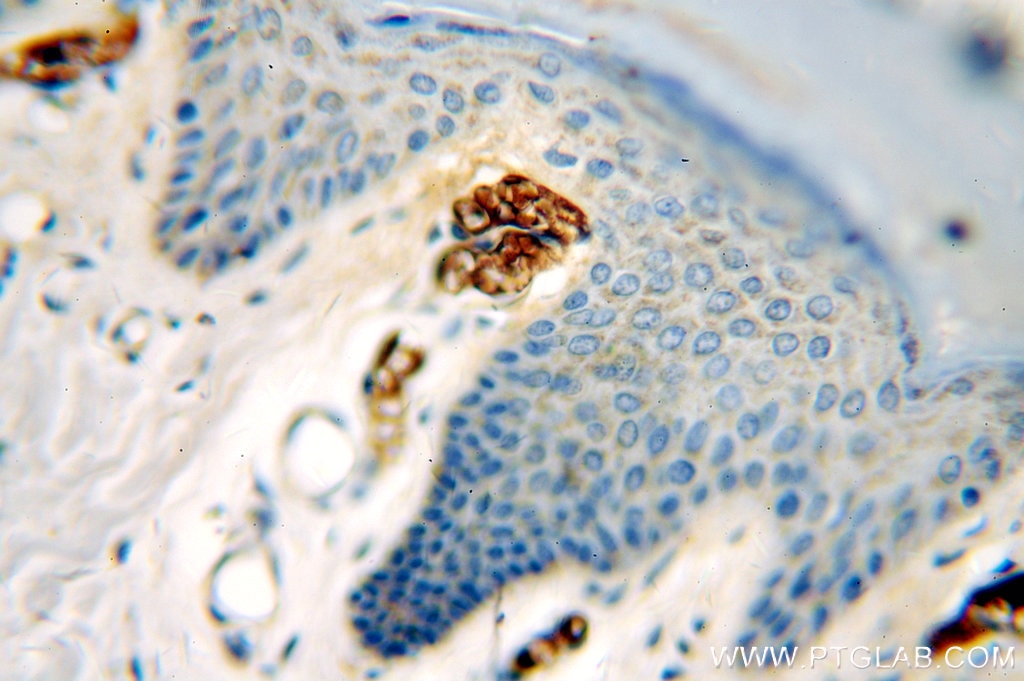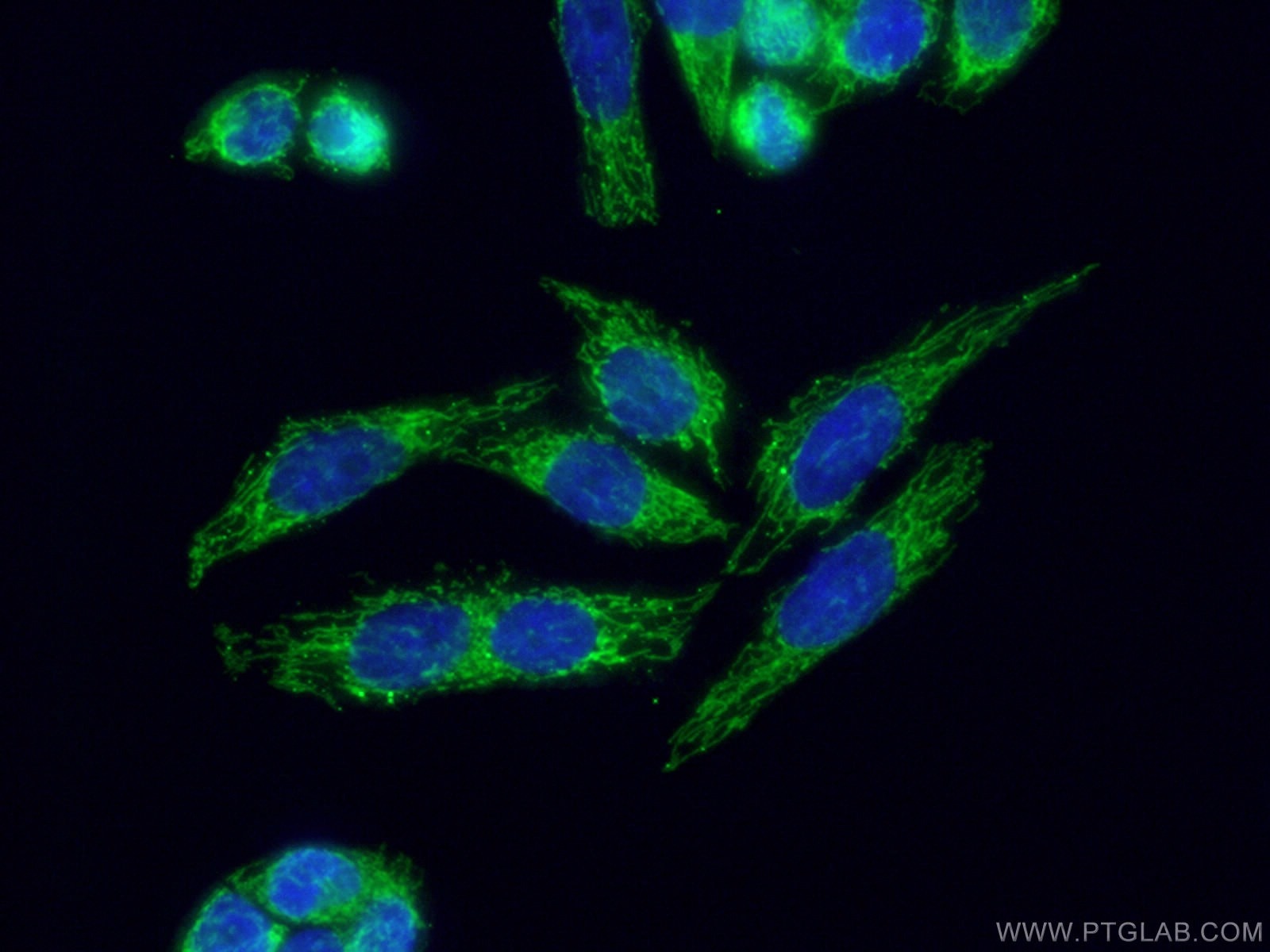Validation Data Gallery
Tested Applications
| Positive WB detected in | HEK-293 cells, A431 cells, A375 cells, mouse ovary tissue, mouse kidney tissue |
| Positive IHC detected in | human hepatocirrhosis tissue, human skin tissue Note: suggested antigen retrieval with TE buffer pH 9.0; (*) Alternatively, antigen retrieval may be performed with citrate buffer pH 6.0 |
| Positive IF/ICC detected in | HeLa cells |
Recommended dilution
| Application | Dilution |
|---|---|
| Western Blot (WB) | WB : 1:500-1:1000 |
| Immunohistochemistry (IHC) | IHC : 1:20-1:200 |
| Immunofluorescence (IF)/ICC | IF/ICC : 1:50-1:500 |
| It is recommended that this reagent should be titrated in each testing system to obtain optimal results. | |
| Sample-dependent, Check data in validation data gallery. | |
Published Applications
| KD/KO | See 1 publications below |
| WB | See 7 publications below |
| IF | See 1 publications below |
Product Information
20824-1-AP targets Sam50 in WB, IHC, IF/ICC, ELISA applications and shows reactivity with human, mouse, rat samples.
| Tested Reactivity | human, mouse, rat |
| Cited Reactivity | human, mouse, rat, pig |
| Host / Isotype | Rabbit / IgG |
| Class | Polyclonal |
| Type | Antibody |
| Immunogen |
CatNo: Ag14799 Product name: Recombinant human SAMM50 protein Source: e coli.-derived, PGEX-4T Tag: GST Domain: 119-468 aa of BC007830 Sequence: TFEVTELRRLTGSYNTMVGNNEGSMVLGLKLPNLLGRAEKVTFQFSYGTKETSYGLSFFKPRPGNFERNFSVNLYKVTGQFPWSSLRETDRGMSAEYSFPIWKTSHTVKWEGVWRELGCLSRTASFAVRKESGHSLKSSLSHAMVIDSRNSSILPRRGALLKVNQELAGYTGGDVSFIKEDFELQLNKQLIFDSVFSASFWGGMLVPIGDKPSSIADRFYLGGPTSVRGFSMHSIGPQSEGDYLGGEAYWAGLHLYTPLPFRPGQGGFGELFRTHFFLNAGNLCNLNYGEGPKAHIRKLAECIRWSYGAGIVLRLGNIARLELNYCVPMGVQTGDRICDGVQFGAGIRFL 相同性解析による交差性が予測される生物種 |
| Full Name | sorting and assembly machinery component 50 homolog (S. cerevisiae) |
| Calculated molecular weight | 469 aa, 52 kDa |
| Observed molecular weight | 52 kDa |
| GenBank accession number | BC007830 |
| Gene Symbol | Sam50 |
| Gene ID (NCBI) | 25813 |
| Conjugate | Unconjugated |
| Form | |
| Form | Liquid |
| Purification Method | Antigen affinity purification |
| UNIPROT ID | Q9Y512 |
| Storage Buffer | PBS with 0.02% sodium azide and 50% glycerol{{ptg:BufferTemp}}7.3 |
| Storage Conditions | Store at -20°C. Stable for one year after shipment. Aliquoting is unnecessary for -20oC storage. |
Background Information
Sam50, encoded by the SAMM50 gene, is an essential protein of the mitochondrial outer membrane (OMM). It contains a beta-barrel domain conserved from bacteria to man (PMID: 14570913). Sam50 is a part of the sorting and assembly machinery (SAM) necessary for the assembly of beta-barrel proteins in the OMM (PMID: 22252321). It is crucial for maintaining mitochondrial shape, morphology of mitochondrial cristae, and assembly of the mitochondrial respiratory chain complexes (PMID: 26587038; 22252321; 25781180). Polymorphisms in the SAMM50 gene have been associated with development and progression of nonalcoholic fatty liver disease (PMID: 23535911).
Protocols
| Product Specific Protocols | |
|---|---|
| IF protocol for Sam50 antibody 20824-1-AP | Download protocol |
| IHC protocol for Sam50 antibody 20824-1-AP | Download protocol |
| WB protocol for Sam50 antibody 20824-1-AP | Download protocol |
| Standard Protocols | |
|---|---|
| Click here to view our Standard Protocols |
Publications
| Species | Application | Title |
|---|---|---|
Elife QIL1 is a novel mitochondrial protein required for MICOS complex stability and cristae morphology. | ||
Cell Rep A Role for Mitochondrial Translation in Promotion of Viability in K-Ras Mutant Cells.
| ||
Aging Cell 3D reconstruction of murine mitochondria reveals changes in structure during aging linked to the MICOS complex | ||
Free Radic Biol Med Regulation of mitochondrial cristae remodelling by acetylcholine alleviates palmitate-induced cardiomyocyte hypertrophy. | ||
J Cell Biol The outer mitochondrial membrane protein TMEM11 demarcates spatially restricted BNIP3/BNIP3L-mediated mitophagy | ||
bioRxiv MICOS Complex Loss Governs Age-Associated Murine Mitochondrial Architecture and Metabolism in the Liver, While Sam50 Dictates Diet Changes |

